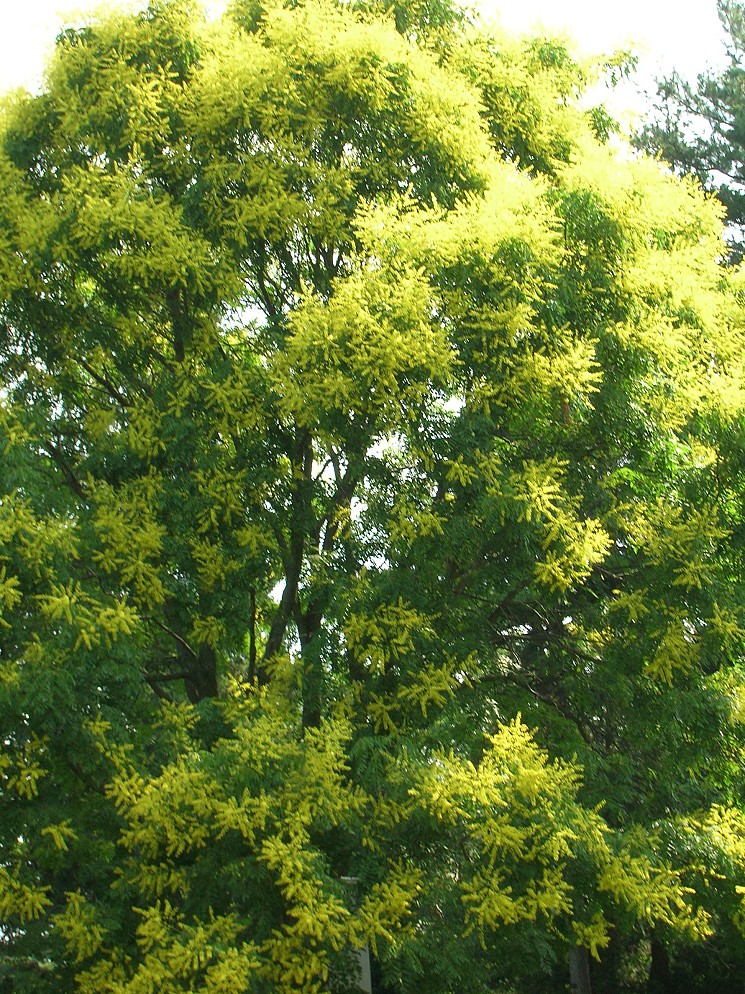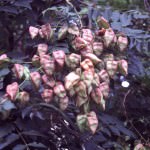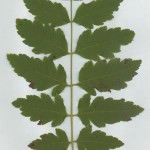Goldenrain Tree, Koelreuteria paniculata

Koelreuteria paniculata, the goldenrain tree, is reason enough to visit Mount Auburn Cemetery in early summer. One of our favorite summer blooming trees, it will definitely catch your attention as you pass by any one of the numerous members of this genus planted throughout our landscape.
The arresting visual attraction, the abundant bright yellow flowers give this tree its common name. While each individual flower is only about ½ inch in size they are arranged on upright panicles 12 to 15 inches long and wide and cover the trees with feathery golden veils. These flowers will last ten to fourteen days depending on how hot it is and, dare we say, how much rain July may bring.
Native to northern China where in the past it had been planted at the tombs of feudal nobility, around palaces and in large and small gardens, this tree was introduced into western cultivation in England in 1763 and into North America sometime later. The genus name is dedicated to Joseph Gottlieb Koelreuter (1733-1806), who was a professor of natural history, curator of the botanical garden at the University of Karlsruhe, Germany and one of the first plant hybridists.
Once the summer floral display has ceased, there is more botanical interest yet to come. The succeeding fruit is aesthetically notable, a three-sided parchment-like capsule holding two or three black pea-shaped seeds. This initially chartreuse colored Chinese lantern-shaped seed capsule covers the trees in August. Drying to a light tan, then eventually a brown color, some of these capsules persist on the tree until the following spring.
Thomas Jefferson’s (1743-1826) Monticello is among the early documented historical records of goldenrain tree plantings in the United States. With a tree having such a spectacular floral display it is not hard to imagine that Jacob Bigelow (1787-1879), a man dedicated to horticulture, medicine and a founder of Mount Auburn Cemetery, or Henry Dearborn (1783-1851), Mount Auburn’s landscape designer and the first president (1829-1834) of the Massachusetts Horticultural Society could have obtained these trees for early cemetery plantings.
On your next visit, you may view goldenrain trees on Central, Elm, Chestnut, Lime, or Spruce Avenues, Meadow Road, Cardinal Path, Heath Path and several other locations at the Cemetery.


Leave a Reply